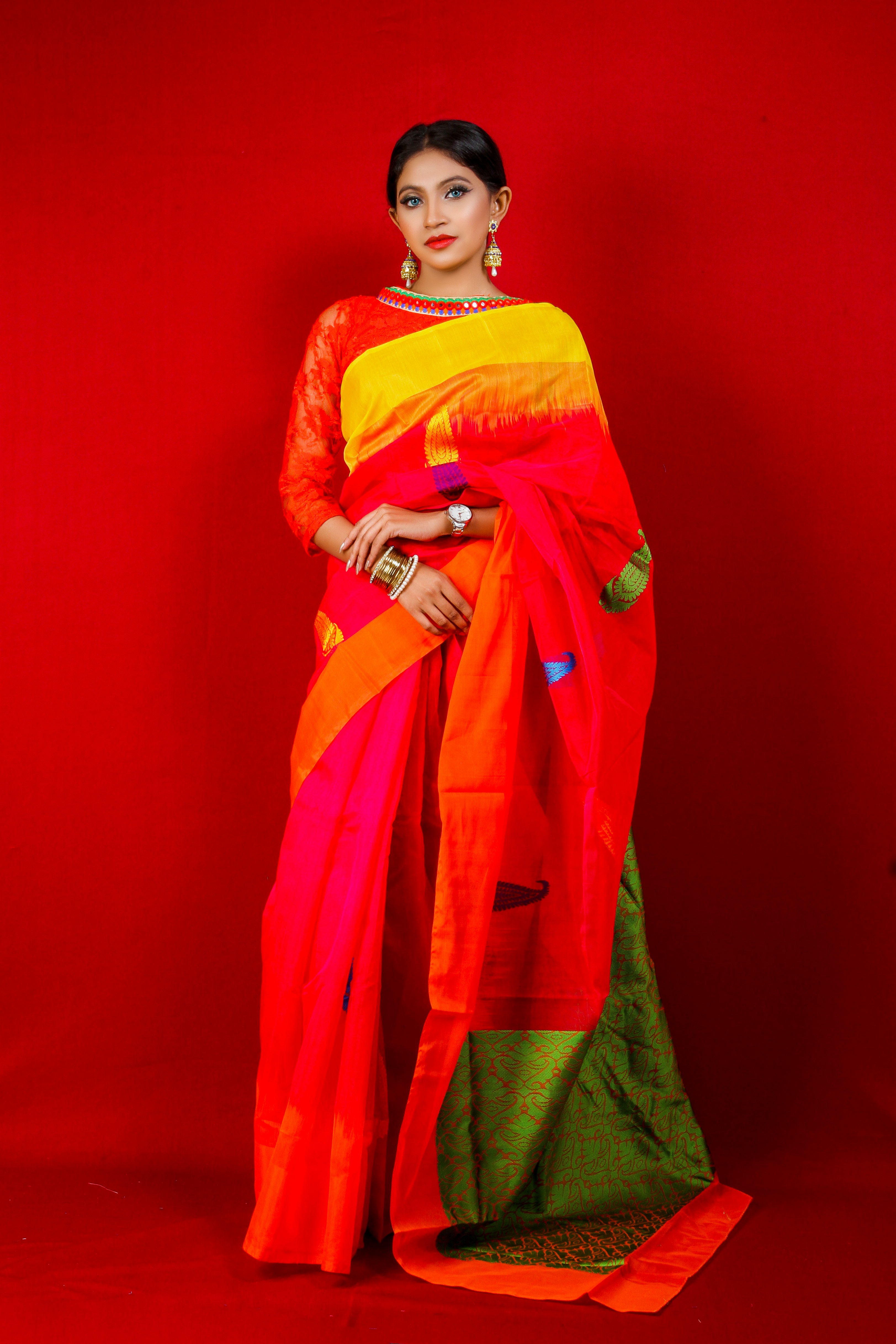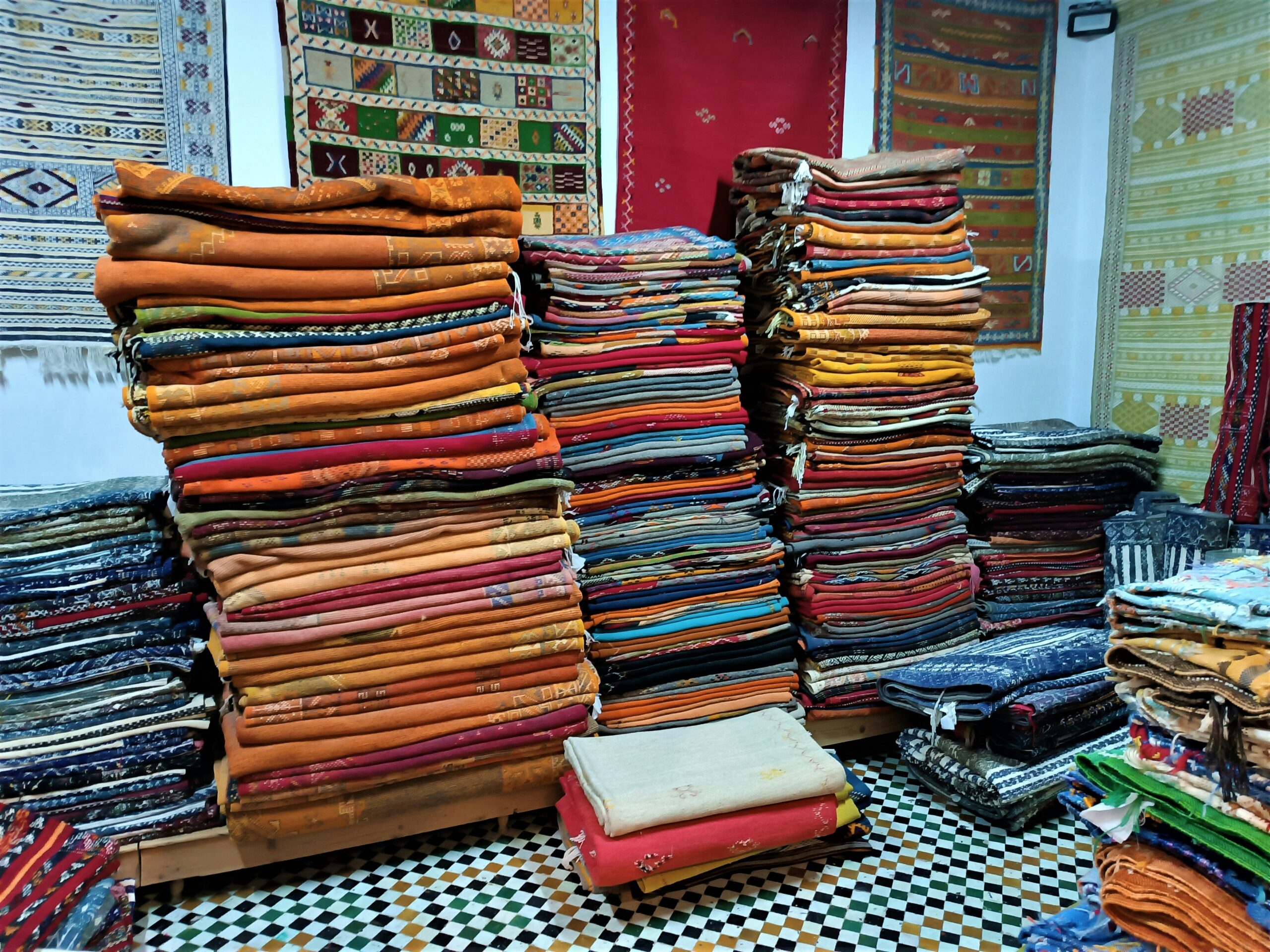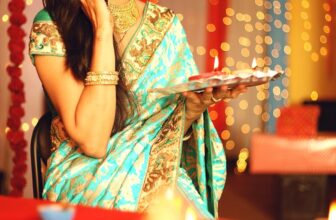
India’s rich textile heritage has gifted the world with many timeless fabrics, but few are as iconic and opulent as the Kanchipuram saree. Known for its vibrant colors, luxurious silk, and intricate zari work, a true Kanchipuram saree is not just an outfit it’s a legacy. However, with the growing demand, the market has also seen a flood of imitation products. As a discerning buyer, knowing how to identify an authentic handwoven Kanchipuram saree is essential.
In this guide, we explore the defining features of a genuine Kanchipuram saree and share tips to distinguish it from machine-made or synthetic alternatives.
1. The Origin: Why Kanchipuram?
Kanchipuram, a town in Tamil Nadu, has been the traditional weaving hub of South India for over 400 years. The sarees woven here are famous for their pure mulberry silk, heavy zari work, and unmatched durability.
Kanchipuram sarees have even earned a Geographical Indication (GI) tag, which means only sarees woven in and around Kanchipuram by traditional methods can be officially labeled as such.
2. Silk Matters: Pure Mulberry vs Artificial
One of the hallmarks of an authentic Kanchipuram saree is the use of pure mulberry silk threads. Here’s how to tell the difference:
Burn Test (only if permissible)
Take a small, loose thread (from the hem if available) and burn it:
- Pure silk burns slowly, smells like burning hair, and leaves a black, powdery ash.
- Artificial silk smells like plastic and leaves a hard bead.
Touch and Feel
- Genuine silk is smooth but not slippery. It has a warm texture and slight weight.
- Artificial silk often feels cold, excessively shiny, and unnaturally light.
3. Zari Check: Real Silver vs Imitation
Zari is the metallic thread used in the borders and pallu (decorative end) of the saree. Authentic Kanchipuram sarees use real silver zari, which is:
- Made from silver-coated threads with gold overlay
- Durable and slightly dull in shine (not glittery)
- Adds weight and grandeur to the saree
To check for real zari:
- Scratch gently or pull a zari thread—real zari reveals red silk thread inside, while fake ones use plastic or polyester.
- Real zari is non-magnetic and oxidizes slightly over time.
4. Joint Between Body and Border (Korvai Weave)
In genuine handwoven Kanchipuram sarees, the body and border are woven separately and then joined manually through a technique called “Korvai”.
Look for:
- A visible “pit” or line where the body meets the border
- The joint is done so meticulously that it’s durable and seamless, but not invisible
Machine-made sarees often lack this feature and have printed or glued borders.
5. Temple Borders and Traditional Motifs
Original Kanchipuram sarees are adorned with time-honored South Indian motifs, such as:
- Temple borders (gopuram patterns)
- Checks and stripes
- Peacocks, elephants, and mango designs
- Yaali (mythical creature) and rudraksha patterns
The detailing in these motifs is extremely sharp and consistent in handwoven sarees. In fake ones, the patterns may appear blurry or repetitive.
6. Weight and Fall of the Saree
Authentic Kanchipuram sarees are heavier than their synthetic counterparts. This is due to:
- The use of three-ply pure mulberry silk
- Real silver zari
- Dense weaving technique
When draped, they have a beautiful fall and retain pleats gracefully. Fake sarees often feel flimsy and lack structure.
7. Certification Tags and GI Labels
Always check for certifications:
- Silk Mark Certification – Issued by the Silk Board of India, this tag confirms that the saree is made of pure natural silk.
- GI Tag Label – Confirms the saree is a genuine Kanchipuram product.
These labels are often attached near the blouse piece or pallu and can serve as official proof of authenticity.
8. Price as an Indicator
A real handwoven Kanchipuram saree is a luxury textile, and its price reflects the craftsmanship involved. As of 2025:
- Basic genuine sarees start around ₹10,000–₹15,000
- Heavily worked bridal ones can go up to ₹1,00,000 or more
If you see a “Kanchipuram” saree for ₹3,000 or ₹5,000, it is likely:
- Machine-made
- Mixed with synthetic fibers
- Using imitation zari
9. Buying from Reputed Sellers
To avoid fakes, always buy from:
- Authorized Kanchipuram silk dealers
- Reputed handloom showrooms or brands with history
- Government emporiums like Poompuhar, Co-optex, or online stores with Silk Mark Certification
Ask for authenticity certificates and don’t hesitate to quiz the seller about the weave, zari, and origin.
Conclusion: Preserving Tradition with Awareness
An authentic handwoven Kanchipuram saree is more than attire, it is art, history, and culture woven into six yards. In a marketplace full of imitations, identifying a genuine piece requires awareness, patience, and attention to detail.
By choosing authentic Kanchipuram sarees:
- You invest in quality and durability
- You uphold a centuries-old tradition
- You support the artisans who keep this heritage alive
So next time you shop for one, use the tips above and wear your legacy with pride.






